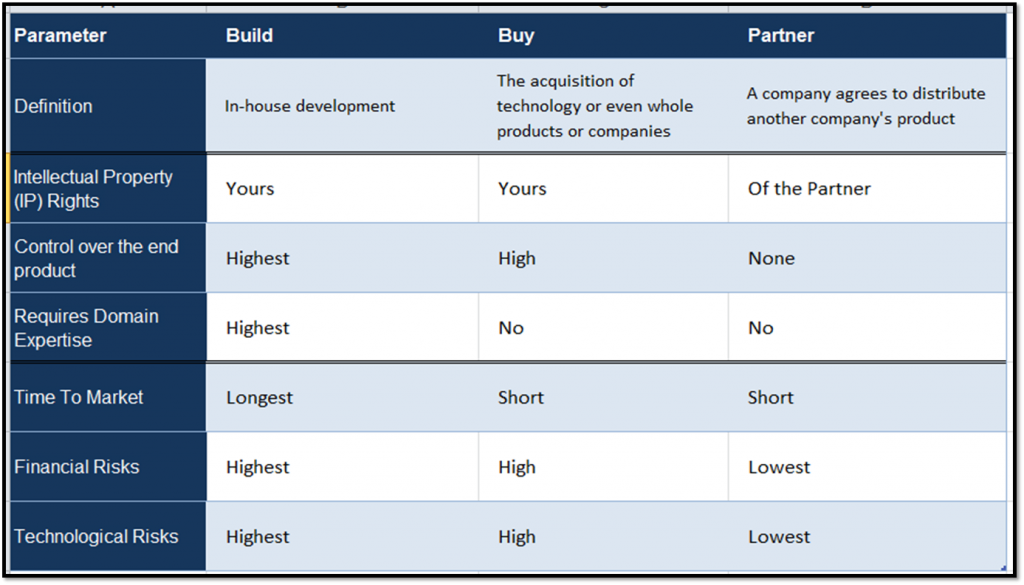By Rivi Aspler
 Adding a new product to your product portfolio is usually discussed whenever you want to create a product-based competitive differentiation or when you need to fill a gap in your product portfolio.
Adding a new product to your product portfolio is usually discussed whenever you want to create a product-based competitive differentiation or when you need to fill a gap in your product portfolio.
Now, I know that what I’m about to say is somewhat provocative, but my experience has proved that technologists will usually go for the Build Strategy whenever a new product is discussed.
Please don’t get me wrong – ‘Build’ is indeed an important strategy; but one should always consider alternative strategies including Buy and Partner.
- Build – Refers to an in-house development.
- Buy – Refers to an acquisition of technology or a company (alongside with its market-share).
- Partner – Refers to a resale or OEM agreement in which a company agrees to resell the products of another company or leverage another companies products in their own solution.
The attached table highlights the main differences between the three strategies. And since people tend to underestimate challenges, I’ve added some more notes, just below the table.
(Click table to enlarge)
Looking at the table, one can see that depending on your target, the relevant alternative should be seriously discussed.
For example, if Time-To-Market or Risk Aversion are the most important factors, the Build Strategy would be a less favorable one compared to the Buy or Partner Strategies.
On the other hand, when you are a domain expert, have a great idea (i.e. IP), are in need of full control over your product and can afford the risks, the Build Strategy would be the favorable one.
——————————————-
And since there are so many examples that one can learn from, the following factors should be considered as well …
Whenever the Build Strategy is considered:
- Do not underestimate the importance of the Domain Expertise – It’s likely that you are underestimating the depth and the breadth of the product that will give you that competitive edge that initially drove the new development.
- Do not underestimate the speed in which markets move on one hand and the R&D setbacks on the other hand. There are so many examples in which a cool product has been developed… but the market is already elsewhere when you are ready to launch (and then the sunk cost fallacy is unfortunately the one to be discussed).
Whenever the Buy Strategy is considered:
- Acquiring the people is as important as buying the IP itself – Good acquisition contracts usually include this underestimated section. To ensure that the IP keeps evolving, you want the domain experts to remain with you for at least two-year after the acquisition.
Whenever the Buy or Partner Strategies are considered:
- Do not underestimate the importance of team-work to the success of the business-deal. Getting people to work as a team isn’t that easy as it is. Getting people from 2 different companies to work together as one holistic team is probably the toughest job you will ever have to do (and one of the main reasons for failed acquisitions…. but that’s already another post ……).
Rivi
Tweet this: Building Your Own Product – Isn’t Always the Best Strategy http://wp.me/pXBON-3EV #prodmgmt #strategy #innovation
